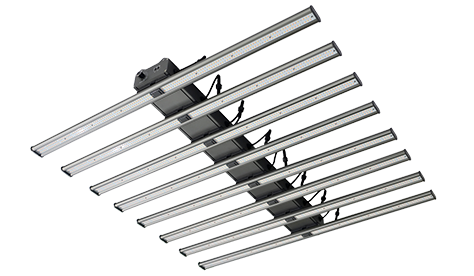هل تعرف كيف تزرع الخضروات والفواكه التي نأكلها يوميًا؟ هل هو من خلال الزراعة التقليدية أو الزراعة المائية؟
- الزراعة التقليدية، مع تاريخ آلاف السنين ، هو حاليًا الطريقة الزراعية الأكثر انتشارًا في العالم.
- يتضمن الزراعة المائية ، التي تم تطويرها في العقود القليلة الماضية ، زراعة النباتات في بيئة بدون تربة.
ما هي الاختلافات بين الزراعة التقليدية والزواج المائي؟ أيهما أكثر ملاءمة لمستقبل التنمية الزراعية؟ دعنا نستكشف هذه الأسئلة.
كيف تختلف المائية عن الزراعة التقليدية؟
المتوسط المتنامي
الزراعة التقليدية: التربة بمثابة الوسيلة المتنامية في الزراعة التقليدية ، مما يوفر الدعم للنباتات.
الزراعة المائية: يزيل الزراعة المائية الحاجة إلى التربة ، باستخدام حلول المغذيات لتزويد النباتات بالمغذيات. يمكن استخدام مواد دعم مختلفة مثل البيرلايت والفيرميكوليت والرغوة لدعم جذور النبات.
استخدام المياه
الزراعة التقليدية: يعتمد الري في الزراعة التقليدية على هطول الأمطار الطبيعية والاصطناعية. يمكن أن تضيع الماء من خلال التبخر والتسلل.
الزراعة المائية: يمكن إعادة تدوير الماء في الزراعة المائية من خلال عمليات مثل التبخر والتسلل والنتح.
أَثْمَر
الزراعة التقليدية: يتأثر نمو النبات في الزراعة التقليدية بالتربة والظروف المناخية ، مما يؤدي إلى انخفاض العائدات بشكل عام.
الزراعة المائية: يمكن أن يوفر الزراعة المائية مياه ومواد غذائية وافرة للنباتات ، وربما زيادة عائدات المحاصيل.
التأثير البيئي
الزراعة التقليدية: يمكن أن يؤدي استخدام المبيدات والأسمدة في الزراعة التقليدية إلى تلوث التربة والمياه.
الزراعة المائية: تعتمد الأنظمة المائية غالبًا على حلول المغذيات ، مما يقلل من استخدام الأسمدة.
يكلف
الزراعة التقليدية: تميل الزراعة التقليدية إلى انخفاض تكاليفها لأنها لا تتطلب حلولًا للمغذيات والمعدات الإضافية.
الزراعة المائية: الزراعة المائية أغلى من الزراعة التقليدية بسبب الاستثمارات الأولية في حلول ومعدات المغذيات.
قابلية التطبيق
الزراعة التقليدية: تتطلب الزراعة التقليدية موارد الأرض في الهواء الطلق.
الزراعة المائية: يمكن أن تتكيف الزراعة المائية مع مختلف البيئات الداخلية والخارجية ، بما في ذلك المناطق الحضرية والصحاري والظروف الصعبة الأخرى.
لماذا الزراعة المائية أفضل من الزراعة التقليدية؟
تحديات الزراعة التقليدية
ارتفاع استهلاك الموارد. تتطلب الزراعة التقليدية موارد مياه كبيرة للري والاستخدام الكبير للأسمدة لتعزيز الغلة. يمكن أن يكون للاستهلاك المفرط لهذه الموارد آثار بيئية ضارة.
قضايا تدهور الأراضي. يمكن أن يؤدي استخدام المبيدات والأسمدة في الزراعة التقليدية إلى تعطيل بنية التربة. يمكن أن تؤدي الزراعة المطولة والمفرطة إلى انخفاض في خصوبة التربة وحتى تساهم في التصحر.
الاعتماد على الطقس الطبيعي. تعتمد الزراعة التقليدية اعتمادًا كبيرًا على الظروف الجوية للإنتاج والحصاد. يمكن أن تؤدي الكوارث المرتبطة بالطقس مثل الفيضانات والجفاف والأعاصير ، وما إلى ذلك ،
تحليل استدامة الزراعة الحديثة: الزراعة المائية مقابل الزراعة التقليدية
انخفاض استخدام المياه. يمكن أن يقلل الزراعة المائية بشكل كبير من استهلاك المياه ، بنسبة تصل إلى 90 ٪ مقارنة بالزراعة التقليدية. يتم تحقيق ذلك من خلال المراقبة الدقيقة لاستخدام المياه والدورة الداخلية للمياه داخل النظام ، مما يقلل من النفايات والتبخر.
زيادة الغلة. غالبًا ما تظهر النباتات في الأنظمة المائية معدلات نمو أسرع وارتفاع عائدات لكل وحدة مساحة. وذلك لأن الجذور لديها وصول مباشر إلى حلول المغذيات التي يتم التحكم فيها بدقة ، مما يلغي المنافسة والقيود التي تفرضها ظروف التربة.
انخفاض متطلبات الأرض. يمكن أن تعمل الأنظمة المائية في الداخل ، مما يسمح بالتكديس الرأسي ، مما يجعلها مناسبة جيدًا للمناطق الحضرية أو المناطق ذات توفر الأراضي المحدود.
السيطرة على المناخ. تتيح البيئات الخاضعة للرقابة ، مثل الدفيئات الزراعية ، الإنتاج على مدار السنة غير متأثر بالظروف الجوية. هذا يقلل من خسائر المحاصيل بسبب عوامل مثل الصقيع أو إصابة الآفات.
الحد من العمل. يمكن للأتمتة والتكنولوجيا في الأنظمة المائية يمكن أن تبسيط العمليات ، مما يقلل بشكل كبير من الحاجة إلى العمالة اليدوية مقارنة بالزراعة التقليدية.
دراسات حالة الزراعة المائية الناجحة

الصين: JD مصنع الخضار المائي
يقع JD Hydroponic Vegetable Factory في تشجيانغ ، الصين. تأسست في عام 2018 ، توظف هذه المزرعة المائية تقنيات مائية متقدمة. ينمو المرفق الخضار المختلفة ، بما في ذلك الخس والطماطم والخيار والفلفل.
الولايات المتحدة: Aerofarms
Aerofarms هي مزرعة مائية رأسية تقع في نيوارك ، نيو جيرسي ، الولايات المتحدة الأمريكية. تأسست المزرعة في عام 2011 ، وتنمية مجموعة من الخضروات ، بما في ذلك الخس والطماطم والخيار والفلفل.


هولندا: Tomatoworld
تكرس TomatoWorld لزراعة الطماطم باستخدام الزراعة المائية المتقدمة وتقنيات الزراعة المستدامة. إنه مركز تعليمي يعرض أحدث الابتكارات في تكنولوجيا الدفيئة ، بما في ذلك الزراعة المائية ، للزوار من جميع أنحاء العالم.
إذا كنت مهتمًا بالزراعة المائية الداخلية أو زراعة الدفيئة على نطاق صغير ، فيرجى استكشافنا أنظمة الحديقة العمودية الداخلية. نحن نقدم آلات زراعة مصنع المصنع المدمجة المدمجة ويمكننا تخصيص الأنظمة الرأسية لمتطلباتك.
هل سيحل الزراعة المائية محل الزراعة التقليدية؟
قد يتساءل الكثير من الناس عما إذا كانت الزراعة المائية هي الاتجاه المستقبلي. أعتقد أن الزراعة المائية لها مزايا ، لكنها لا يمكن أن تحل محل الزراعة التقليدية تمامًا دون شروط ووقت محدد.
بينما تطرقت إلى مزايا الزراعة المائية ، فإنه يحتوي أيضًا على بعض العيوب:
ارتفاع التكاليف. تكاليف الاستثمار الأولية للزراعة المائية مرتفعة نسبيًا ، مما يشكل تحديًا للمزارعين الصغار.
المتطلبات التقنية العالية. تتطلب الزراعة المائية مستوى عالٍ من الخبرة الفنية ، والتي تتطلب معرفة وخبرة متخصصة.
قابلية التطبيق المحدودة. حاليا ، الزراعة المائية مناسبة في المقام الأول للمحاصيل الصغيرة. من المأمول أن يؤدي التقدم في التكنولوجيا المائية إلى اختراقات في زراعة المحاصيل الأكبر.
بالنظر إلى العوامل المذكورة أعلاه ، أعتقد أن الاتجاه المستقبلي للزراعة المائية كما يلي:
في مناطق وقطاعات محددة ، ستحصل الزراعة المائية على مزايا واستبدال الزراعة التقليدية تدريجياً. ومن الأمثلة على ذلك المناطق القاحلة والمراكز الحضرية والأسواق الراقية.
سوف تتكامل الزراعة المائية مع الزراعة التقليدية ، وتشكل طريقة جديدة من الإنتاج الزراعي. إن دمج التكنولوجيا المائية في الزراعة التقليدية يمكن أن يعزز العوائد ، والحفاظ على الموارد ، والحد من التأثير البيئي.
جايز
بصفته مديرًا للتسويق الرقمي في AUXGROW، يجمع Jayes بين شغف أنظمة الزراعة المائية والخبرة في مصابيح LED للنمو. من خلال الخبرة العملية والفهم العميق، يرشدك جايز عبر عالم الزراعة المستدامة.






